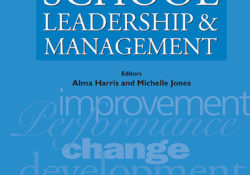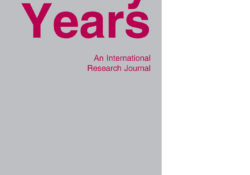eric.ed.gov har udgivet: This is the first workbook-text in a two-part series written for deaf students. It is remedial in nature, aimed at the secondary level, and covers addition, subtraction, multiplication, and division of whole numbers. The use of the number 10 in explaining the concepts presented is stressed throughout. For the second workbook, see SE 015 828, and for the teacher’s guide, see SE 015 829. (DT) Link til kilde
Like this:
Like Loading...
eric.ed.gov har udgivet: This is the second remedial workbook-text in a two-part series written for deaf students at the secondary level. It covers fractions, geometry formulas, decimals and percents, and time. For the first workbook, see SE 015 827, and for the teacher’s guide, see SE 015 829. (DT) Link til kilde
Like this:
Like Loading...
eric.ed.gov har udgivet: Reforms in K-12 science education are global. New national science curricula were introduced in the United States (NRC, 1996), in Canada (CEMC, 1997), and in Europe (European Commission 2007). In this article, the impact of these reforms on college students in Quebec is studied. Articulation between high school and college sectors is viewed through the lens of STEM (Science, Technology, Engineering, Math) high school and college faculty. Faculty of both communities experienced stress as the first education reform curricula cohorts entered college. Results of a diagnostic test developed by CEGEP faculty to assess college preparedness found no difference in math and science content knowledge when pre-reform cohorts were compared with cohorts instructed with the reform curriculum. Improvements were observed in problem solving skills, which has led to… Continue Reading →
Like this:
Like Loading...

tandfonline.com har udgivet en rapport under søgningen “Teacher Education Mathematics”: ABSTRACT ABSTRACT This longitudinal study aims to create in-depth knowledge about the phenomena of middle-leadership and career in school by identifying (1) driving forces for seeking and maintaining middle-leading positions, (2) opportunities and difficulties in maintaining the middle-leading role over time, and (3) underlying thoughts of career disclosed in the respondents’ expressions. Five different reasons for seeking middle-leading positions are identified and driving forces for maintaining the position are categorised as either internal reward/non-observable outcomes or external reward/observable outcomes. Furthermore, the results show that different types of difficulties arise in distinct phases and that middle-leaders’ needs for support therefore vary over time. Additionally, the complexity of teachers’/middle-leaders’ career thinking clearly emerges, and implications for practice are discussed. Link til kilde
Like this:
Like Loading...
eric.ed.gov har udgivet: I investigate the determinants of high school completion and college attendance, the likelihood of taking science, technology, engineering or math (STEM) courses in the first year of college and the probability of earning a degree in a STEM field. The focus is on women and minorities, who tend to be underrepresented in STEM fields. Tracking four cohorts of students throughout Florida, I find that large differences in math achievement across racial lines exist as early as elementary school and persist through high school. These achievement differences lead to higher drop-out rates in high school and a reduced probability of attending college for black students. However, conditional on immediately attending a four-year college after high school, black and Hispanic students are more likely than whites to take STEM… Continue Reading →
Like this:
Like Loading...
tandfonline.com har udgivet en rapport under søgningen “Teacher Education Mathematics”: ABSTRACT ABSTRACT This paper briefly overviews my research in supporting children to learn number concepts by relating number words, research-based visual supports, and math symbols. I first outline my approach to helping children build relationships between the use of concrete materials and the building of abstract concepts. I then focus on two crucial early aspects of building meanings for numbers: (1) understanding break-apart partners such as 5=3+2 that support addition and subtraction with small numbers and children’s moving on to Level 2 counting on and algebraic problem representations, and (2) the use of visual five-groups in understanding numbers 1–1000 and in drawings to support multi-digit computations. The research-based learning path of visual-spatio supports is shown and discussed for each topic,… Continue Reading →
Like this:
Like Loading...
eric.ed.gov har udgivet: This study was designed to initiate the process of building professional development learning communities for pre-service math teachers through revealing those teachers’ conceptions/beliefs of students’ learning and their own learning in China. It examines Chinese pre-service math teachers’ conceptions of student learning and their related pedagogical beliefs with respect to the following four aspects: self-regulation, construction of knowledge, the social nature of learning, and a dynamic view of ability. A total of 129 middle-school and secondary pre-service math teachers from China participated in this study. The results indicated that the Chinese pre-service teachers’ conceptions of student learning and their pedagogical beliefs are constructive, process-oriented, and progressive. In addition, the traditional Chinese socio-cultural values still have an impact on the pre-service teachers’ conceptions of student learning. Implications and… Continue Reading →
Like this:
Like Loading...
eric.ed.gov har udgivet: The teacher’s guide for the remedial text-workbook “Understanding Math” discusses instruction of the deaf student. An answer key for workbooks 1 and 2, a section with masters for transparencies to be used for games and activities and for teaching fractions, and two patterns for making geometric solids are included in the guide. For workbooks 1 and 2, see SE 015 827 and SE 015 828. (DT) Link til kilde
Like this:
Like Loading...
eric.ed.gov har udgivet: Visual Basic Application for Excel is a simple program language and has the power to process data quickly. The utilization of math functions in Microsoft Excel can help work on Excel display more interactive so that teachers can create props inside Excel. The advantages of Microsoft Excel than other mathematical software are the many math functions and images available in the form of shapes or pictures. The availability of VBA, math and image functions in Microsoft Excel help teachers to design the creation of media related to mathematics learning, especially to develop the ability of junior high school students who have difficulty to connect mathematics lessons with basic mathematics knowledge requirements. By using VBA for Excel, the ability of junior high school students to improve in the… Continue Reading →
Like this:
Like Loading...
tandfonline.com har udgivet en rapport under søgningen “Teacher Education Mathematics”: ABSTRACT ABSTRACT In mathematics education, digital tools have been used to enhance young children’s understanding of specific subject matter. In such implementations, the digital tool can replace, amplify or transform ‘ordinary’ mathematics teaching. In an initial study, systematization and duplication were identified as critical when young children were to solve a combinatorial task. Therefore, a digital version of the task was developed and combined with a non-digital version, to introduce the use of dual artefacts. The digital version of the task enabled the children to visually explore systematization as well as the principle of completion. After using this digital version of the task, the children’s written records became more systematic and included fewer duplications. We conclude that the digital version… Continue Reading →
Like this:
Like Loading...


